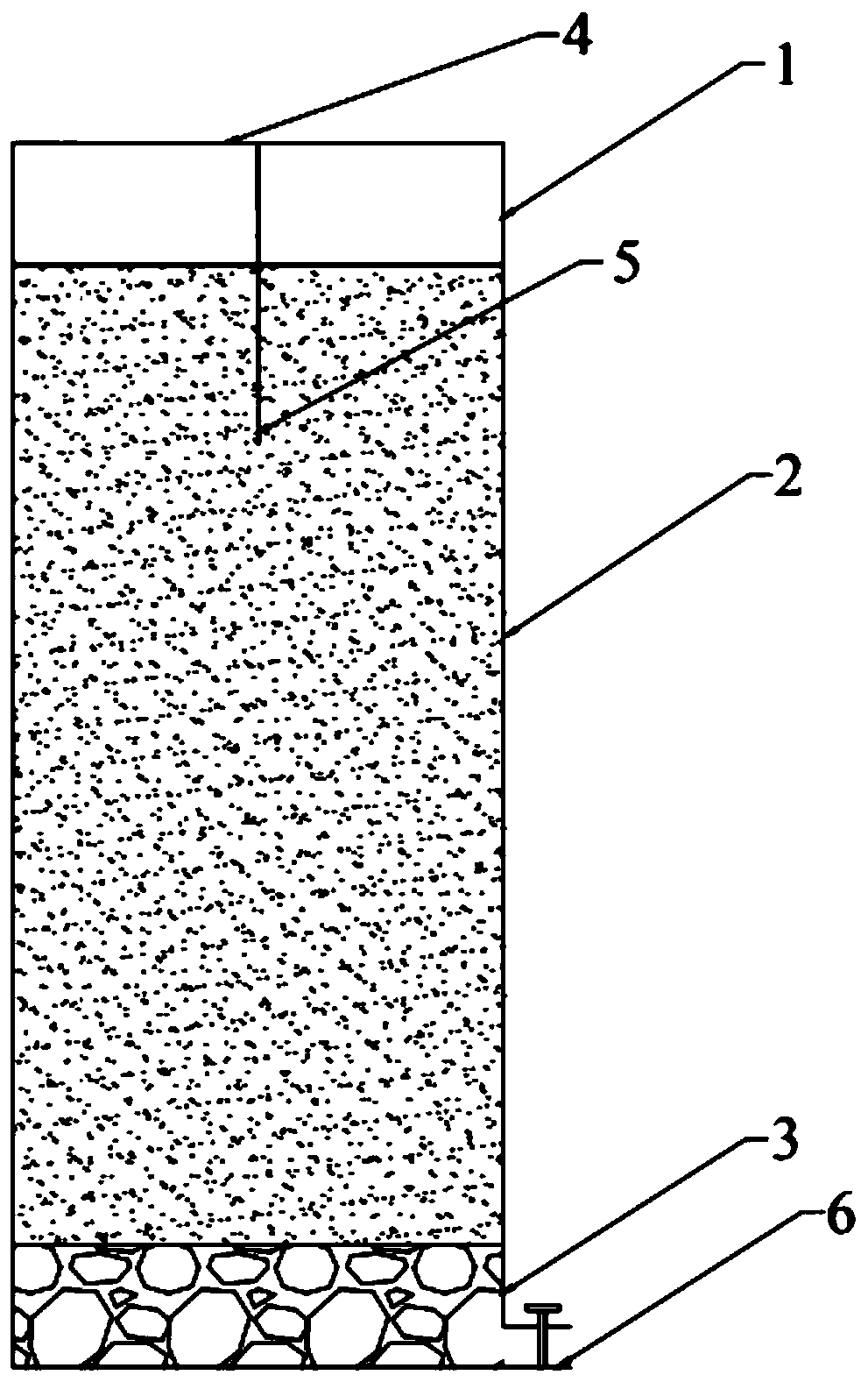Artificial rapid percolation system for improving treatment capability upon pollutants such as nitrogen and phosphorus in rainwater through medium modification
A technology of artificial rapid infiltration and pollutant treatment, which is applied in the fields of water pollutants, water/sewage treatment, runoff/rainwater treatment, etc. Determine the range of process parameters, low removal efficiency of pollutants such as nitrogen and phosphorus, etc., to achieve the effect of small footprint, simple structure, and improved adsorption effect
- Summary
- Abstract
- Description
- Claims
- Application Information
AI Technical Summary
Problems solved by technology
Method used
Image
Examples
Embodiment 1
[0029] according to figure 1Schematic diagram of the structure to prepare an artificial rapid infiltration system, the device is PVC plastic, the whole is a cylinder, the height is 130cm, the length and width are 60cm, the medium layer 2 is 85cm, the overflow layer 1 is 25cm, and the outlet layer 3 is 20cm , the surface of the medium layer and 30cm away from the surface are provided with water distribution pipes. The medium layer is uniformly mixed with soil, river sand, vermiculite and limestone with a particle size of less than 2cm. The addition ratio of soil and river sand is 1:1, and vermiculite The doping amount of stone is 15% of the total volume of soil and river sand, the doping amount of limestone is 8% of the total volume of soil and river sand, and the particle size of pebbles filled in the drainage layer is 2-4cm.
[0030] Measure the initial concentration of COD, ammonia nitrogen, TP, and TN in the sewage to be 173-185mg / L, 7-8mg / L, 0.3-0.4mg / L, 7.8-9.5mg / L, respe...
Embodiment 2
[0032] Same as Example 1, the difference is that the added vermiculite is modified vermiculite, modification method: natural vermiculite is sieved with 2mm, and HNO of 1mol / L is adopted 3 Stir and soak for 2 hours, take it out and rinse, remove soluble impurities, dry in an oven to constant weight, then take 10g of the above-mentioned pretreated vermiculite and chitosan, and put In the beaker, add 100ml of 1mol / L NaOH solution, stir for 24 hours, soak in distilled water, wash until the pH is constant, and dry in an oven to constant weight before use.
[0033] The average effluent concentrations of COD, ammonia nitrogen, TP, and TN in the sewage at the detection drainage were 15.29mg / L, 0.81mg / L, 0.018mg / L, and 4.21mg / L, respectively.
Embodiment 3
[0035] The same as Example 2, the difference is that only the water inlet pipe is set on the surface of the medium layer, and the water outlet is set on the drainage layer. The average effluent concentrations of COD, ammonia nitrogen, TP and TN in the sewage at the drainage site are respectively 13.42 mg / L, 0.46 mg / L, and TN. 0.0141mg / L, 6.06mg / L.
PUM
| Property | Measurement | Unit |
|---|---|---|
| Particle size | aaaaa | aaaaa |
| Particle size | aaaaa | aaaaa |
Abstract
Description
Claims
Application Information
 Login to View More
Login to View More - R&D
- Intellectual Property
- Life Sciences
- Materials
- Tech Scout
- Unparalleled Data Quality
- Higher Quality Content
- 60% Fewer Hallucinations
Browse by: Latest US Patents, China's latest patents, Technical Efficacy Thesaurus, Application Domain, Technology Topic, Popular Technical Reports.
© 2025 PatSnap. All rights reserved.Legal|Privacy policy|Modern Slavery Act Transparency Statement|Sitemap|About US| Contact US: help@patsnap.com

